How do I transport my aquarium over long distances or to another apartment?
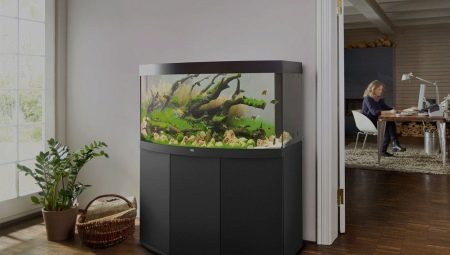
Every aquarist knows that moving is a huge stress for fish, the result of which can cause many unpleasant consequences for pets. The aquarium owner should make the greatest possible effort to make the relocation as comfortable and painless as possible.
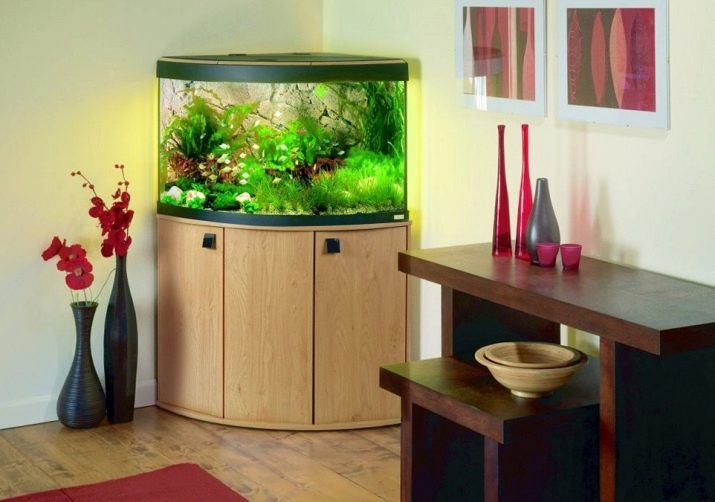
Which method of transportation should you choose?
The choice of a vehicle, sea vessel, plane or car for moving fish to another place, city or apartment is of great importance. This directly depends on the size of the aquarium.
If the tank for fish has a small size, for example, 30 liters, then it is quite possible to cope with the help of an ordinary car. If the aquarium is large in size, it is worth using special automotive equipment, which is designed to transport bulky goods.
In addition to choosing a car, you need to think over and calculate the route of movement, choose the road on which there will be less shaking in order to deliver the cargo safely, without cracks and glass chips. If it happens that you have to transport fish by plane, be sure to find out if the airline has such an opportunity.

Preparation
To transfer fish to a long distance, you will need to prepare an airtight container and fulfill a number of conditions.
Cleaning
Transporting the aquarium is another additional reason to clean the tank and equipment from accumulated dirt and other deposits. To do everything right, you need to do the following:
- use a siphon (soil cleaner) to clean the bottom;
- drain cloudy water;
- in a new place, prepare a clean one, in the amount of 40% of the capacity of the aquarium;
- get all the equipment out of the home reservoir and rinse it without detergents;
- do not wash the soil, put it in bags and fill it with water to maintain the biological balance;
- after everything is cleaned, wash the walls of the tank; for this it is recommended to use water from the aquarium, without using any other additional chemistry.


Catching fish
After we have taken away most of the water, it will become much easier to catch the fish.
It is advisable to extract the inhabitants of the home reservoir at night, when they are sleeping or inactive.
At the moment, there are several ways to fish.
- After turning off the light, you should wait a while until the fish calm down. Next, using the net, we catch the pets. It is important not to forget that if the lights are turned on suddenly, they may have a panic attack. Therefore, to illuminate the aquarium, it is better to use a flashlight with red or blue light, to which the fish do not react and will allow themselves to be easily caught.
- You can try using plastic bags, glass jars, or other clear containers. The eyesight of the fish does not allow you to see the transparent walls of the containers in the water. If you put them in the path of pets, they themselves can swim into a trap.
- The simplest and most common device for catching fish is a landing net. The pet catcher should be larger than the largest fish. The movements of the landing net should be neat and smooth. This will relieve the stress of the fish and help you catch it without getting hurt.

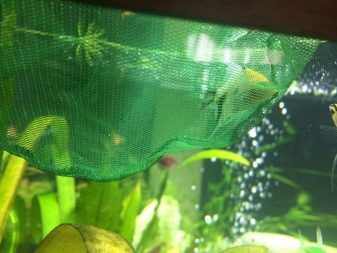
Plant packaging
When transporting plants from the aquarium, the most important thing is to keep them the same. Plants may die if the trip takes more than two days without light. For comfortable transportation of algae, the temperature in the containers must be kept cool, but not lower than +12 degrees Celsius.
In winter, it is best to transport algae in water, which will protect them from temperature extremes. And also overheating can be detrimental to plants.
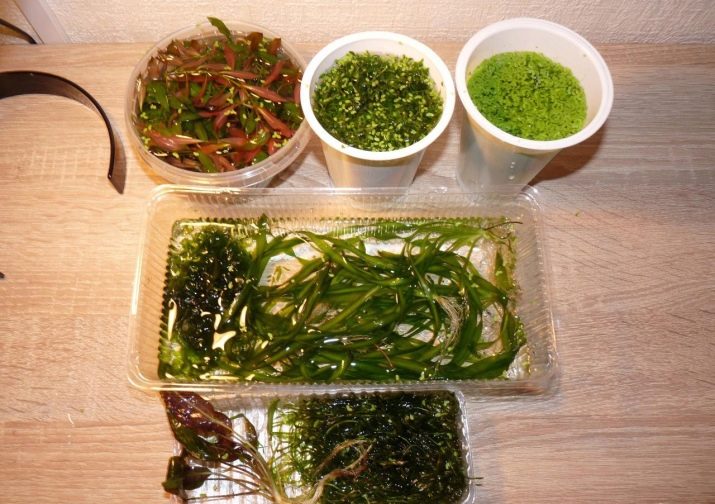
In summer, in no case should the temperature rise above +30 degrees, and leave the plants in direct sunlight.
Preparation of plants for moving is as follows:
- algae, slightly moistened with water, are placed in a bag; there should not be a lot of water in it, a small amount is enough;
- each plant is wrapped in wet paper;
- the neck of the bag is fixed in such a way as to keep moisture;
- no need to blow out air.
Before settling plants in a new aquarium, you should give them time to adapt. That's why the container with algae should lie at room temperature for about an hour. Then you can put them in the aquarium.

General rules of carriage
Each case of transporting aquarium fish has its own characteristics.
However, in order to preserve the life and health of the inhabitants of the aquarium, it is important to know and follow the transportation procedure.
The following simple rules will relieve the fish of stress:
- first you need to make sure that all the fish are doing well, unhealthy and weak pets may not tolerate the road;
- one day before transportation, we stop feeding the inhabitants of the aquarium;
- 2-3 hours before the trip, we transfer the fish to a container with cooler water than usual, by 2-3 degrees, with water to cleanse the intestines; this should be done to reduce water pollution on the road;
- choose what to transport the fish in, based on their size; small and medium ones can be transported in bags, for large ones you will need special containers with a lid;
- it is advisable to choose special plastic bags so that the inhabitants of the aquarium do not hurt each other on the way;
- it is recommended to transplant pets into a special container for transportation before leaving;
- the water in the containers must be from a working aquarium;
- bags with fish are tightly folded into a box or box; if there is free space, you need to fill it with something elastic so that the bags with fish do not roll over the container;
- the liquid level in the bag should be several times higher than the growth of the fish;
- after the pets are transplanted into the bag, you need to fill it with oxygen using a hose, then the hose is removed, and the bag is tightly tied; the ratio of water to oxygen should be 50 to 50;
- be sure to observe the temperature regime on the road, taking into account the time of year, you need to select containers for transportation and calculate the number of fish in bags or containers.


Important! The longer the path, the lower the density of fish in the packages should be. The ideal distribution is one fish per bag. If suddenly something happens to her on a long journey, it will not affect the rest.
How to transport by car?
When transporting in a car, the main thing is to deliver the aquarium to its destination safe and sound. If this is your first move, you should think about whether you have enough knowledge and skills, or is it better to turn to professional carriers.
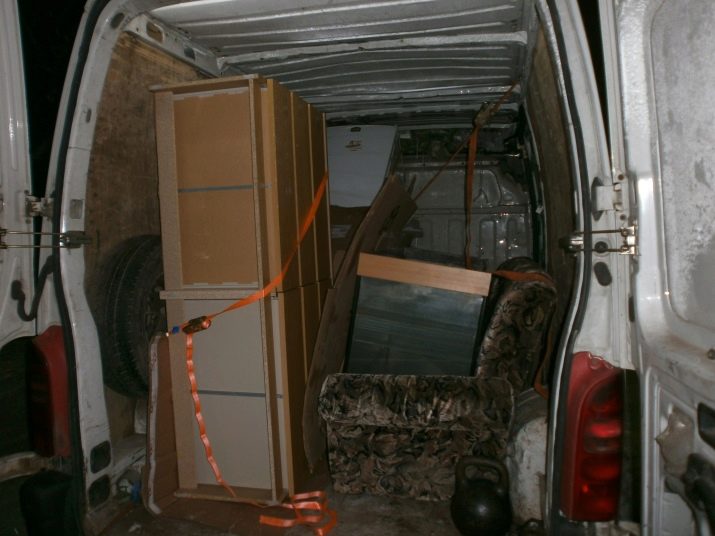
Nowadays, there are a large number of companies that can do this at a high level and save you from unnecessary worries, since they have trained personnel, a complete set of equipment and materials for these purposes.
But if you do not have the opportunity to use the services of professionals, and you decide to do it yourself, tricks and tips to keep in mind include:
- pre-think the route of movement, calculate the travel time, because it depends on what condition we will deliver the fish to the new place of residence;
- you should take care of the packaging materials, choose reliable and strong ones, carefully pack the tank using foam plastic, foam rubber, corrugated cardboard or special air-bubble film; if the aquarium is small or medium in size, a box can be used, and for larger tanks it is advisable to use a wooden frame;
- when transporting and unloading the aquarium, you should exercise great care and attention, remembering that this is a fragile product;
- when transporting large volumes of domestic reservoirs, they must be fixed in the body, for this, before using the car, you need to make sure that it is equipped with the appropriate devices.

Winter moving
Transportation of fish over long distances in winter has its own specifics. The outside temperature is much lower during the cold season, so it is worth considering how to accomplish this task. If you are transporting aquarium fish in a car, it is worth remembering that the air in the cabin must be warmed up and not less than +15 degrees.
It is advisable to transport pets in a large container with water - it cools down slowly, so the moving process will be less painful, the fish will arrive alive and healthy.
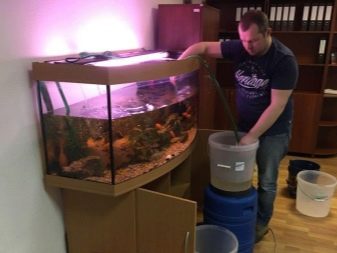

You can also additionally cover the aquarium with a blanket or some other warm object. In the absence of a reservoir, you can use special bags that retain heat. Put the fish in thermal containers or bags, put them in a bag and put a heating pad or bottles of warm water there to maintain a comfortable temperature.
See below for how to disassemble the aquarium before shipping.








